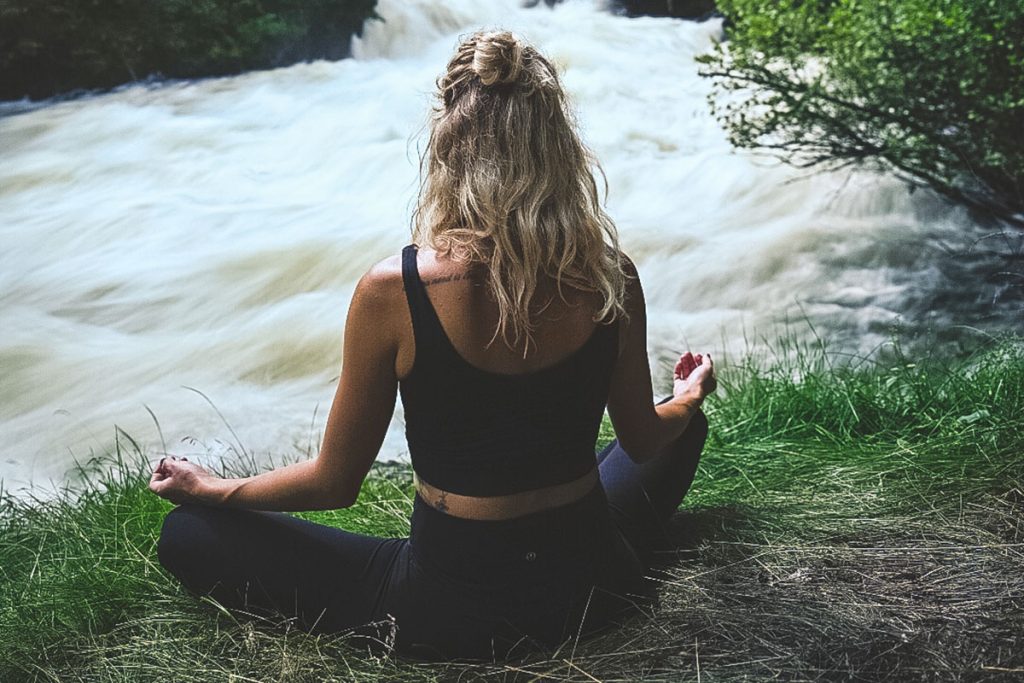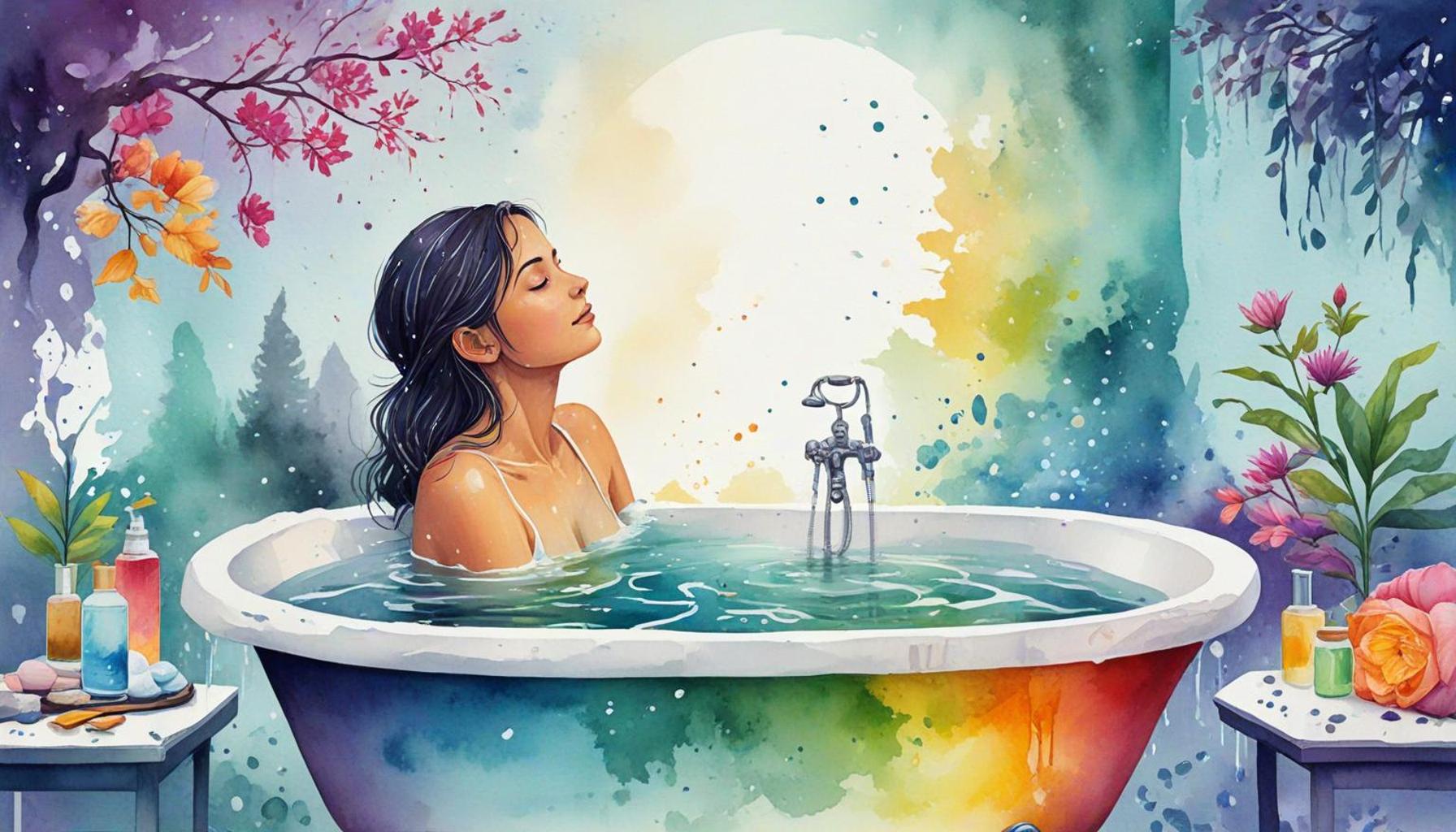Exploring the Senses: How Bath Meditation Enhances Connection to the Present

Embracing Mindfulness Through Bath Meditation
In a world that continually demands our attention, carving out time for moments of serenity is becoming increasingly vital. One effective way to achieve this tranquility is through bath meditation, an enriching practice that not only relaxes the body but also fortifies a deeper connection to the present moment. This ritual offers a sanctuary amidst the chaotic rush of life, particularly in bustling environments like Nigeria’s urban centers.
Bath meditation intricately weaves together various senses, inviting participants to immerse themselves fully in their bathing experience. Here’s a deeper look at the elements that elevate this practice:
- Sound: The soothing sounds of water, whether it’s gentle splashing or the controlled flow of a tap, create a calming backdrop. Adding serene music or nature sounds can enhance relaxation and help participants sink into mindfulness.
- Smell: The use of aromatic oils or bath salts, such as lavender, eucalyptus, or citrus fragrances, can significantly elevate mood, evoke memories, and create an atmosphere of tranquility. In Nigeria, many embrace local herbal infusions that not only smell delightful but are also believed to carry therapeutic properties.
- Touch: The sensation of warm water enveloping the body provides a comforting cocoon, allowing for a sense of weightlessness. This sensation can promote relaxation, leading to a profound sense of peace while the mind seeks stillness.
In Nigeria, where daily life can seem relentless, finding such moments becomes essential for mental health and well-being. Modern city living often overshadows the rich traditions that celebrate bathing as a meditative practice. Many people are now revisiting these age-old customs, incorporating practices from different ethnic backgrounds—such as the baths of the Yoruba people, which are often infused with local herbs aimed at promoting both physical and spiritual cleansing. Such culturally rich practices highlight the accessibility and significance of bath meditation in a contemporary context.
As we delve into the transformative potential of bath meditation, it becomes evident how sensory experiences can act as a bridge to reconnecting with our inner selves. Engaging deeply with the four elements of sound, smell, touch, and even visual stimuli, can create a holistic experience that rejuvenates both the body and soul. By dedicating time to this practice, individuals can discover a renewed sense of presence, clarity, and emotional well-being. Unlock the therapeutic potential of bath meditation and explore how it can enhance your daily spiritual and mental routine.
LEARN MORE: This related article may interest you

Engaging the Senses: The Essential Elements of Bath Meditation
Engaging in bath meditation transcends mere relaxation; it is an immersive experience, skillfully orchestrated through the engagement of the senses. By tuning into sound, smell, touch, and sight, practitioners can create a sanctuary that is both personal and restorative. In a country as diverse as Nigeria, the incorporation of local therapeutic elements further enhances this meditative ritual, transforming it into a celebration of culture and tranquility.
The Symphony of Sound
The auditory aspect of bath meditation plays a critical role in setting the mood. The sound of water is inherently soothing, evoking a sense of calm and facilitating mindfulness. In many Nigerian households, the rhythmic flow of water from a tap or the soft splashing of bathwater becomes a harmonious backdrop that grounds individuals in the present moment. Adding gentle music or nature sounds can elevate this experience, helping to drown out the distractions of everyday life and prompting deeper relaxation. Consider exploring local artists or playlists featuring traditional Nigerian instruments, which can seamlessly blend heritage with serenity.
Aromatic Journeys
Our sense of smell is deeply intertwined with our emotions and memories. The right aromas can promote well-being and work as a powerful tool for achieving mindfulness. Utilizing aromatic oils or local bath salts can transform an ordinary bathing experience into an aromatic journey. In Nigeria, herbal infusions such as bitter leaf and neem are often used, believed to cleanse not only the body but also the spirit. The delicately balanced scents reopen the channels of memory and connection to the moment, enhancing both psychological comfort and emotional healing during meditation.
The Embrace of Touch
When it comes to bathing, the sensation of warm water hugging the body is a profound part of the experience. This enveloping warmth creates a sanctuary, allowing the mind to surrender its hold on the day-to-day worries. Skin receptors respond to the water’s temperature, which fosters relaxation and promotes a deep sense of peace. In addition to this, participants might consider incorporating textured items like soft towels or natural sponges into their ritual, enriching the tactile experience and enhancing the overall sense of well-being.
- Sound: Use calming music or nature sounds.
- Smell: Incorporate local herbal aromas for emotional connection.
- Touch: Experiment with temperature and textures for deeper relaxation.
Bath meditation is not merely an approach to personal health; it is a bridge that connects the individual to their surroundings, grounding them while fostering a broader understanding of their cultural roots. Through the integration of these sensory experiences, participants of bath meditation can find not only calmness but also a profound connection to the present, enriching mental clarity and emotional resilience.
Exploring the Benefits of Bath Meditation
Bath meditation offers a unique opportunity to enhance mindfulness and mental well-being. Immersing yourself in warm water, combined with focused breathing and sensory awareness, weaves a tapestry of relaxation and revitalization. The soothing properties of water naturally promote a sense of calm, which can significantly reduce stress levels, while the act of meditation deepens your awareness of the present moment.
Additionally, incorporating elements such as candles, soothing music, or essential oils can heighten your sensory experience, allowing you to engage fully in the moment. This sensory engagement not only fosters relaxation but also encourages a profound connection to your emotional state, helping you to identify and process feelings more clearly.
The practice of bath meditation encourages a routine that can easily be integrated into daily life, offering you a sanctuary of peace at any time. Making this practice a habit can amplify overall quality of life, leading to improved emotional resilience and mental clarity.
| Advantages | Description |
|---|---|
| Enhanced Mindfulness | Engaging fully with the experience improves awareness of the present moment. |
| Stress Reduction | Warm water soothes the mind and body, leading to relaxation and tension relief. |
As you embark on this bath meditation journey, consider the small adjustments you can make to create a serene atmosphere. Items such as soft towels, aromatic salts, or gentle lighting can deepen your experience. Remember, the key to bath meditation is not just the bath itself but how you interact with it, allowing you to reconnect with your most authentic self.
CHECK OUT: Click here to explore more
Visual Elements: The Art of Creation
Visual elements play a pivotal role in bath meditation, inviting practitioners to foster an atmosphere of beauty and tranquility. The practice of setting the scene cannot be understated—dim lighting, floating candles, or vibrant flowers can stimulate the sense of sight, promoting a serene environment. In many Nigerian cultural practices, the use of colorful fabrics and natural decorations not only adds to the aesthetics but also serves as a reminder of life’s vibrancy and diversity. For example, traditional batik cloths can be draped around the bathing space to reflect the array of colors found in the Nigerian landscape, creating a visually stimulating yet calming effect.
The Power of Reflection
Incorporating mirrors, or even reflecting natural elements, can enhance the meditative experience. The use of water as a reflective surface symbolizes a deeper connection to one’s inner self, encouraging calm introspection. The practice of reflecting whilst bathing instills a sense of awareness, helping individuals reconnect with their thoughts and emotions. This simple act, complemented by the gentle shimmer of water, reinforces mindfulness and deepens one’s connection to the present moment.
Mindful Movement: The Body in Flow
Bath meditation is not solely about sitting still in a tub; it also encompasses the element of movement. Gentle stretching or simply leaning into the warm embrace of water enhances physical awareness and body appreciation. Traditional Nigerian dance movements can inspire gentle stretches performed in the bath, allowing for a free flow of energy throughout the body. This melding of cultural movement with meditative practice fosters a deeper integration of mind, body, and spirit. Practicing intentional awareness during these movements further cultivates a connection to the moment and alleviates anxiety.
Creating Rituals: The Significance of Consistency
Incorporating bath meditation into a daily or weekly ritual creates a consistent approach to mindfulness. The establishment of a personalized routine allows individuals to cultivate an elevated sense of anticipation and commitment toward self-care. In Nigeria, ritualistic practices are deeply embedded in cultural tradition, such as the use of specific days for cleansing and rejuvenation. One might consider aligning bath meditation with these times, amplifying the spiritual significance while enriching personal experience.
- Visual Stimulation: Use colors and natural decorations that reflect the richness of Nigerian culture.
- Reflection: Incorporate reflective elements to enhance introspection.
- Mindful Movement: Utilize gentle movements inspired by local dance forms to connect body and spirit.
By engaging in these immersive experiences, bath meditation serves as a multifaceted practice that elevates mindfulness and enhances one’s relationship with the present moment. The intricate weave of sound, smell, touch, sight, and ritual creates an enriching environment, cultivating emotional resilience and deepening cultural appreciation. As individuals journey through these sensory experiences, they become more attuned to the present, celebrating both personal and collective identities.
YOU MAY ALSO LIKE: Read read another article
Conclusion: Embracing the Moment Through Bath Meditation
In an increasingly fast-paced world, the practice of bath meditation emerges as a profound tool for fostering connection to the present. As explored throughout this article, engaging the senses—visual beauty, reflective surfaces, mindful movement, and ritualistic consistency—creates an immersive environment that invites individuals into a sanctuary of peace and self-discovery. By setting the scene with elements like colorful fabrics and natural decorations, practitioners can enhance not only their surroundings but also their emotional and spiritual experience.
Moreover, incorporating mindful movement influenced by traditional Nigerian practices allows for a holistic connection between mind, body, and spirit, ultimately enriching the meditative journey. These practices resonate deeply with the cultural ethos of mindfulness, rooted in the understanding that self-care extends beyond the individual, connecting us to our collective heritage.
As the waves of a bath cradle the body, they also soothe the mind, presenting a unique opportunity to reflect on one’s thoughts and emotions. Such intentional moments of stillness pave the way for emotional resilience, self-awareness, and a stronger connection to the present moment. By integrating bath meditation into one’s routine, individuals in Nigeria and beyond can not only find relief from daily stresses but also embrace the beauty of existence itself. In this diligent exploration of the senses, we are reminded that the path to mindfulness and enriched living starts with simply being present.


